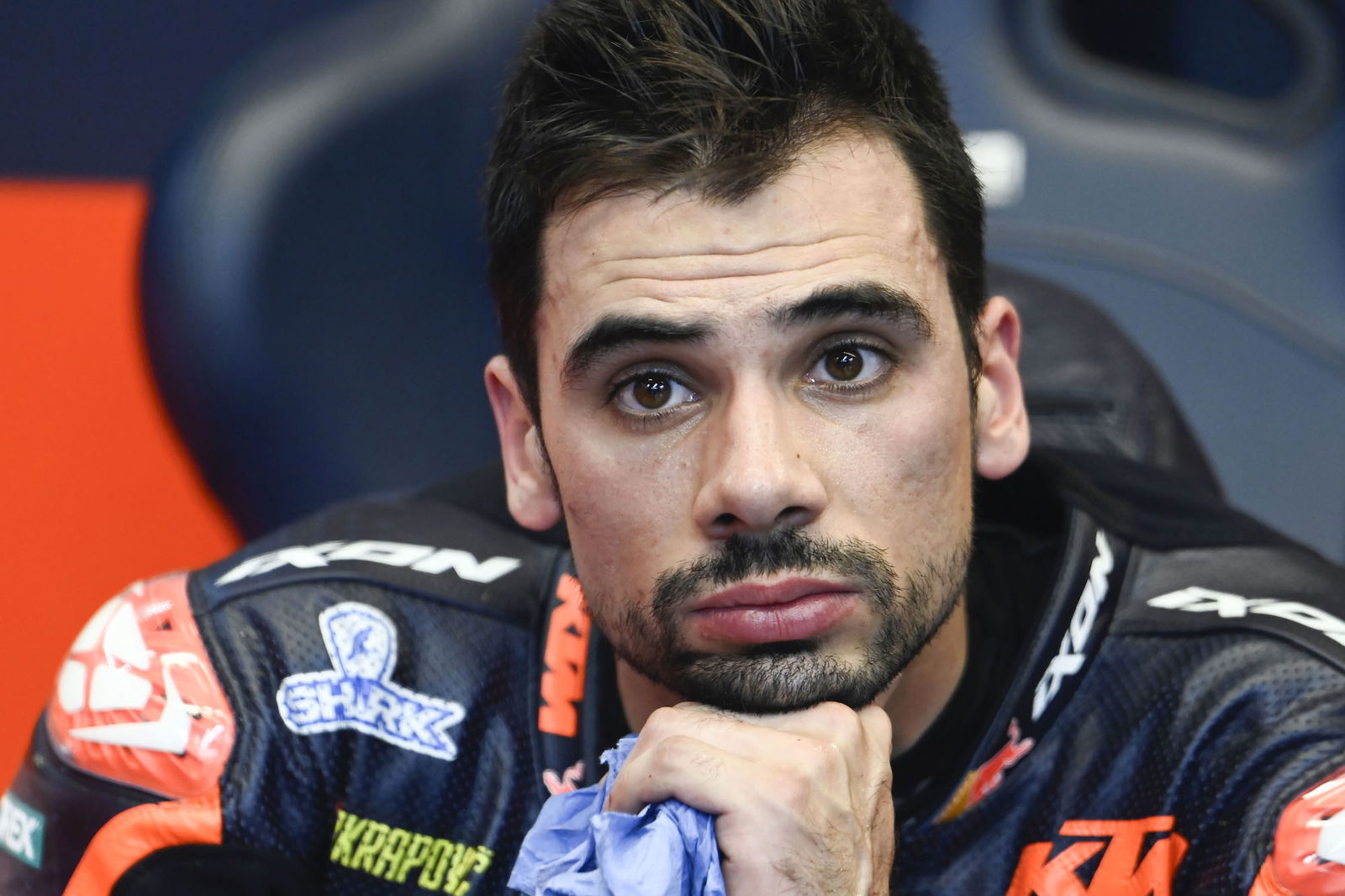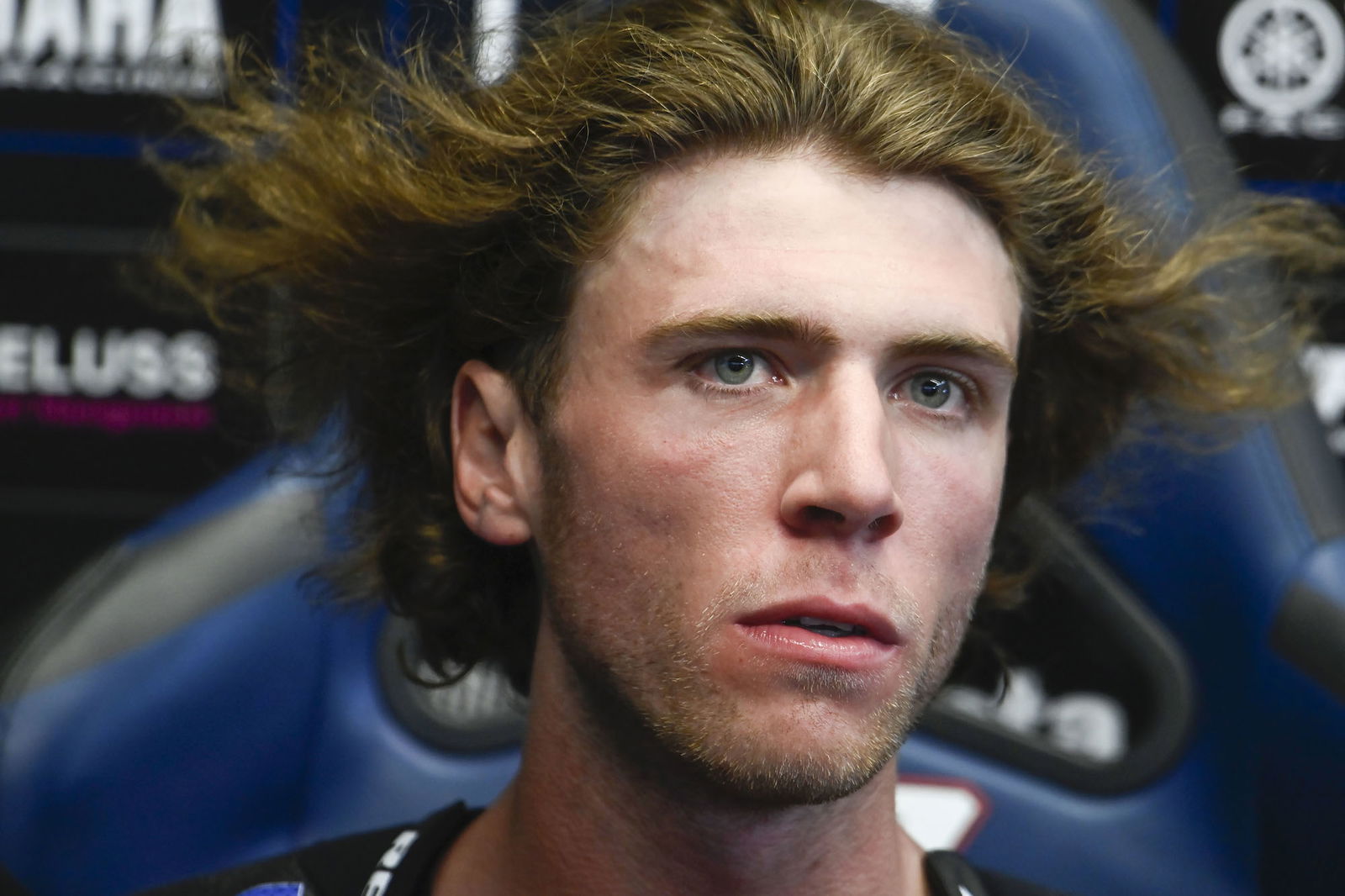Bagnaia victorious, Marquez calls time on 2022 | MotoGP Winners and Losers
As usual, the eighth round of the 2022 MotoGP World Championship in Mugello featured plenty of winners, and plenty of losers.

A redeeming home victory, an unexpected podium, and a continuation of early-season consistency came out of Mugello’s 2022 MotoGP race. But, on the other side, there were plenty of things to leave those involved feeling like they lost in Italy, from a crash out of podium contention to a temporary goodbye.
Winner - Fabio Quartararo
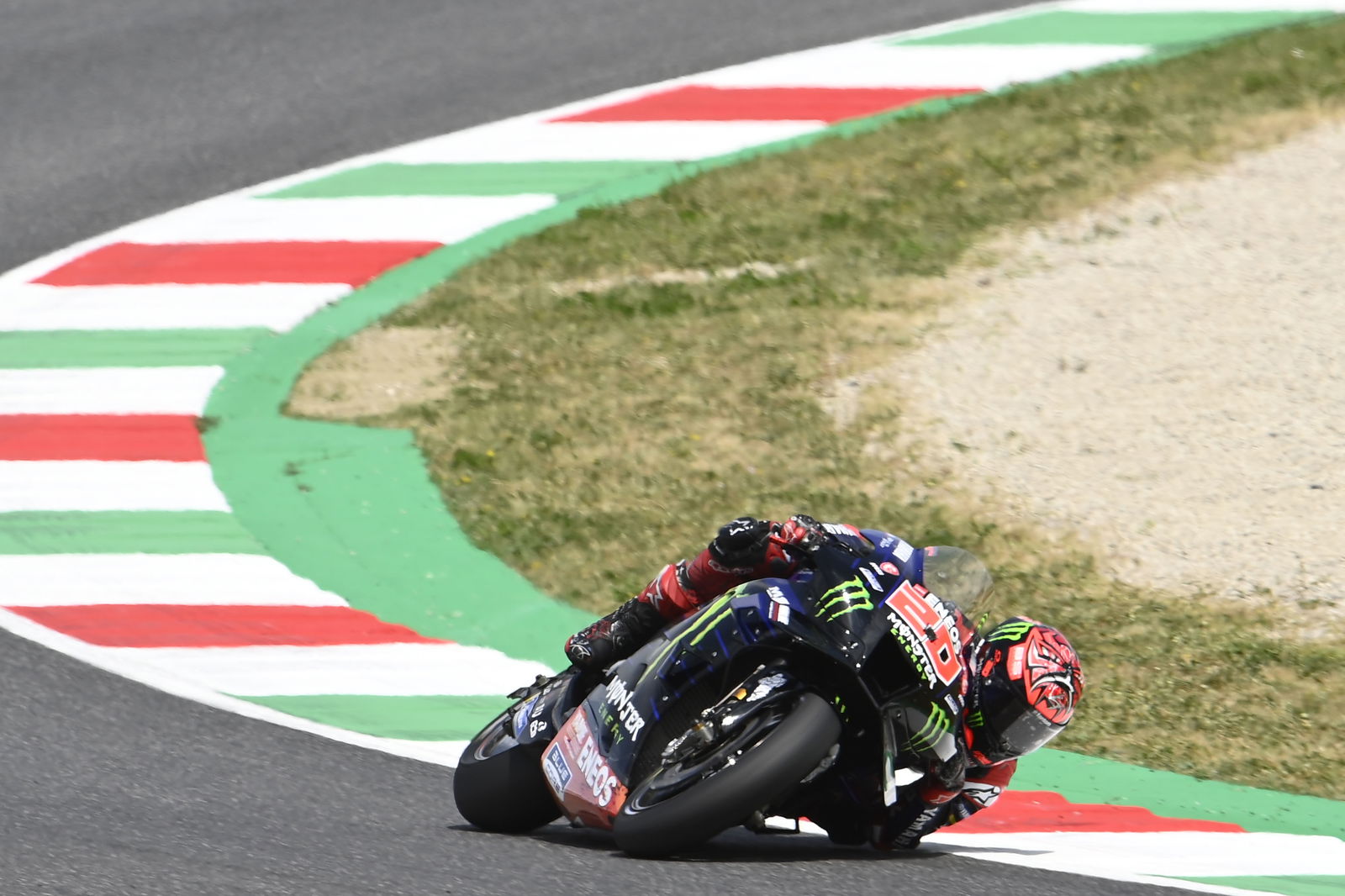
Not for the first time this year, the biggest winner of the Italian Grand Prix was not the rider who finished first in the race, nor the factory who supplied the bike with which that rider finished first. Instead, it was the rider who finished second, because there was not one single point in the time between 1 January 2022 and 2pm CET on 29 May 2022 that Fabio Quartararo seemed capable of finishing on the podium in Mugello.
Mugello has historically been a Yamaha circuit. After Valentino Rossi joined in 2004, he won on an M1 at the Tuscan track on five successive occasions. Then, Jorge Lorenzo won every year from 2011 to 2013, again in 2015 and 2016, and Quartararo himself won in 2021. But, in recent times, as Yamaha’s horsepower deficit has become more definitive of its performance than its corner speed, and as Ducati have found improved cornering on its own Desmosedici, the balance of power at the Italian Grand Prix has shifted from Iwata to Bologna. Quartararo’s victory in 2021, of course, was handed to him by a crash from Ducati’s Francesco Bagnaia, who on that occasion threw away his second opportunity to take a maiden premier class victory in front of him home fans.
Coming into this year’s Italian GP, Quartararo’s chances were worsened by an improved Ducati motorcycle, an improved Ducati rider line-up, a greater number of Ducatis that were capable of running at the front, and the inclusion of Aleix Espargaro and Aprilia in the victory battle.
Indeed, after qualifying, Quartararo’s pace looked good enough to finish somewhere between fifth and eighth, probably, and even that would be a struggle. In many races this year - Qatar, Jerez, Le Mans to name just three - Quartararo’s practice pace has not been representative of his potential. In those races, he was able to look like the fastest rider in free practice, but when faced with the superior ‘raceability’ (a disgusting, fake, yet appropriate word) of the other bikes (provided by their superior horsepower and grip) he was powerless (in a quite literal sense) to fight back.
In Mugello, despite it being the site of the fastest straight in MotoGP, things were different for Quartararo. The Frenchman was able to fight back, and he rode arguably the best race of his career - an assessment which he gave himself in parc ferme - to finish second.
When Jorge Lorenzo was winning in Mugello, he did it by significant margins, for the most part. Between 2011 and 2016, only Marc Marquez was able to get close to him. In 2014, Marquez won, and in 2016, he should have won, but Honda’s understanding of the unified electronics was inferior to Yamaha’s at that point in time, and so he lost out in acceleration. Lorenzo was able to do that thanks to the rolling, sweeping corners of Mugello, that suited the sweet-handling, agile and well-balanced Yamaha YZR-M1. Then, the Bridgestone tyres gave good support, and the grip lasted throughout the race, also thanks to the factory electronics. The riders spun the rear tyre less in those times, and that let riders like Lorenzo maximise their high corner speed riding styles, which, for a Yamaha, was a perfect match.
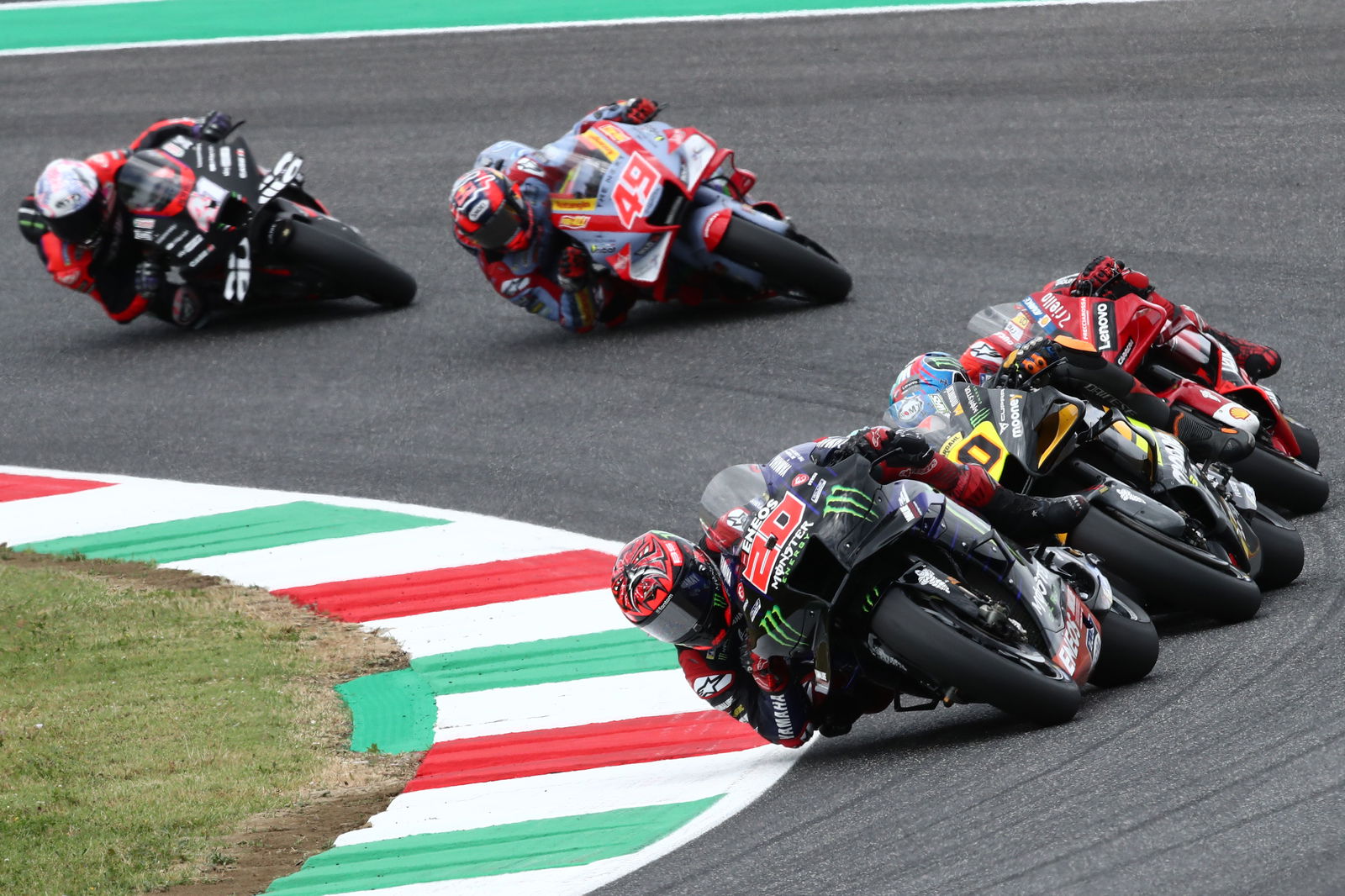
Now, things are different. Drive grip is more important than before in Mugello. You have to stand the bike up and look after the tyre, because the support of the tyres is less, the stress put on them (by aerodynamics and ride height devices) is more, and the electronics are not as advanced. That takes away some of Yamaha’s advantage, because even if they try to run all the corner speed they can (and, realistically, they have to in order to keep pace with the Ducatis), they are not able to do that for the whole race because it wears out the tyre.
That is why Quartararo’s Mugello performance was so spectacular, because he probably had less grip in the final 10 laps than Francesco Bagnaia, but he made more lap time with that less grip than Bagnaia was able to. And, thanks to that, and his supreme overtaking skills, race perception, forward thinking, and - in particular - line choice out of the final corner, he was able to come away with a larger points lead than he had going into Italy. Nobody expected that.
Winner - Francesco Bagnaia
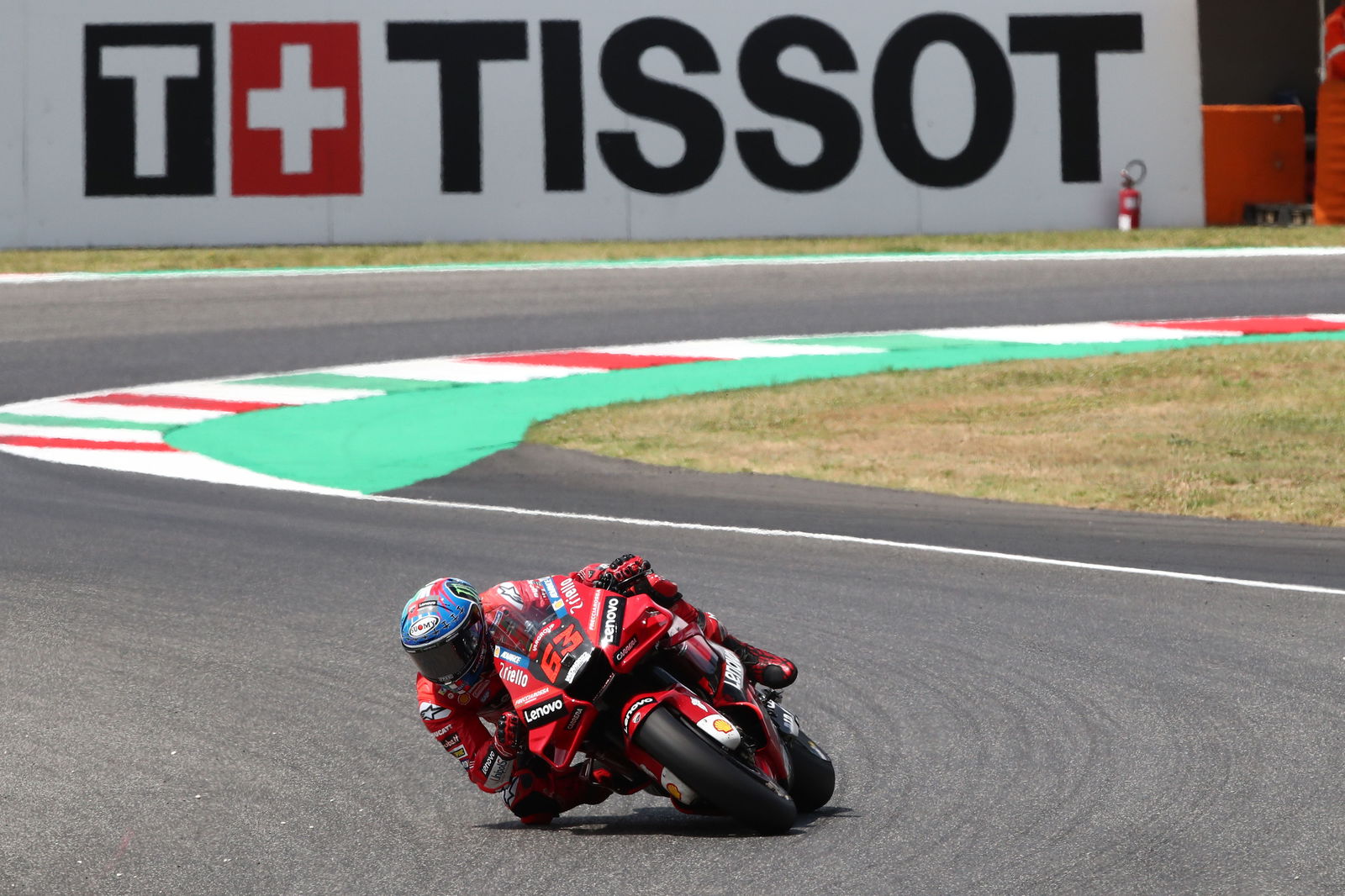
Even though Bagnaia won, he still only took five points out of Quartararo, which made it tempting to put him on the ‘loser’ side of this article. But, in reality, that loss stems from Le Mans, where Bagnaia crashed from second place and victory contention, rather than Mugello, where he controlled the race and took a first Mugello win.
Coming into the race, Bagnaia’s entire identity as a MotoGP rider had shifted. Before Le Mans, he was known as the ice-cool Dovizioso-esque rider who does not make mistakes, never cracks under pressure, and as one of the most difficult riders in MotoGP to pass once he is in the lead.
But, after the French race, Bagnaia suddenly became - to some prominent figures in the Grand Prix media - a rider who throws races, cracks under pressure and makes mistakes when he has a comfortable position. It was understandable. Bagnaia’s Le Mans crash was not the first he had made while holding a podium position. Emilia Romagna 2020, Mugello 2021, Emilia Romagna 2021, Qatar 2022, and Argentina (qualifying) 2022 are all examples of Bagnaia making mistakes or showing the effects of pressure.
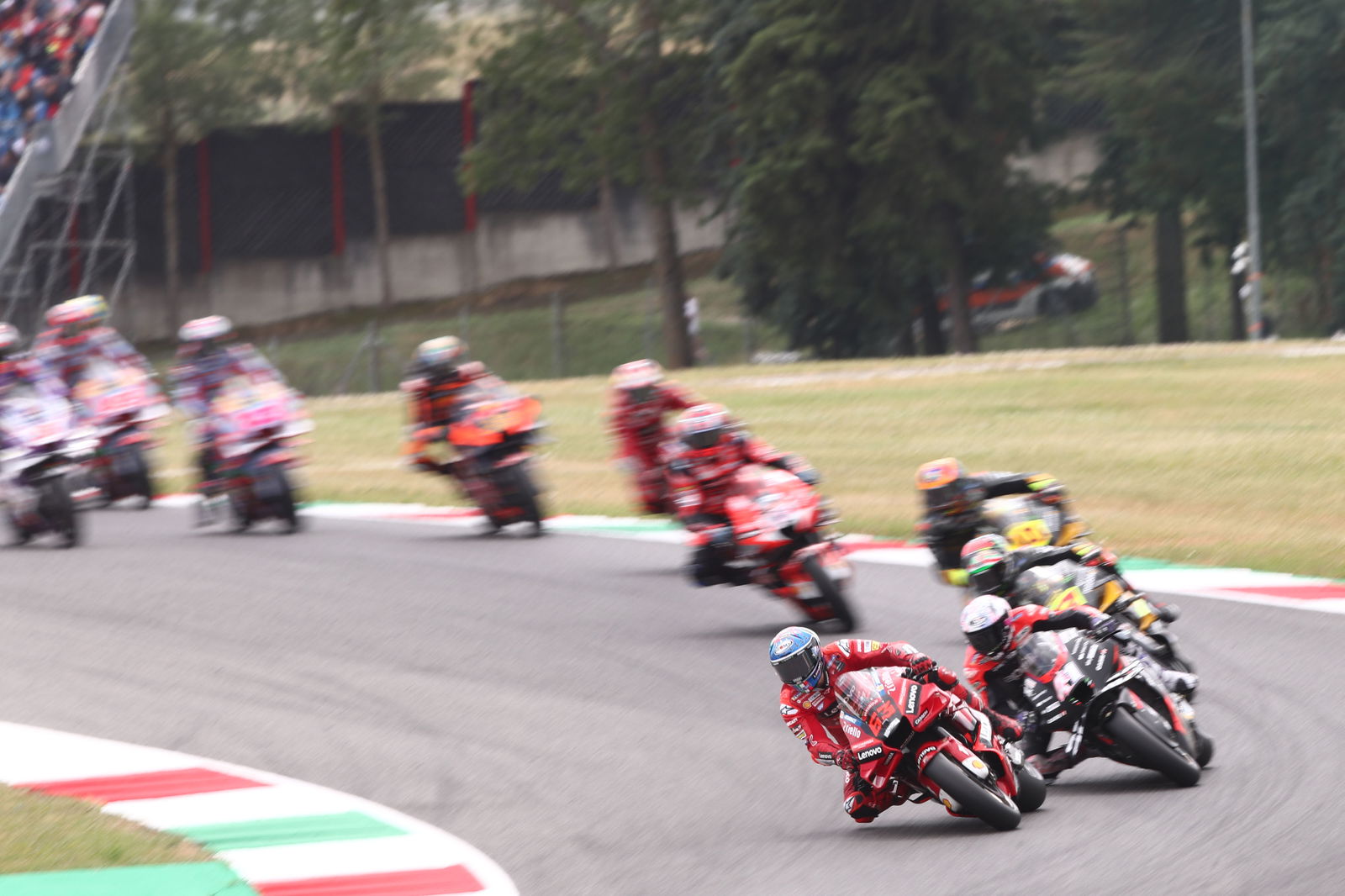
But there were circumstances in almost all of those. Emilia Romagna 2020, sure, he threw that one away, but Mugello 2021 was affected by the death of Jason Dupasquier, Emilia Romagna 2021 by a front tyre choice for a track temperature that fell away during the race, and Qatar 2022 by a preseason that even Davide Tardozzi admitted was probably too intense on the testing side.
Since Jerez this year, Bagnaia has looked more comfortable on the bike. The slides he makes coming into corners are, since Spain, less snappy, more controlled and smooth, and he goes forwards, not backwards, in races. Le Mans was a blip, and he cannot afford any more of those - even by his own admission - but Bagnaia proved that, despite his now 41-point deficit in the championship to Quartararo, he is here to fight for the title.
Winner - RNF Racing
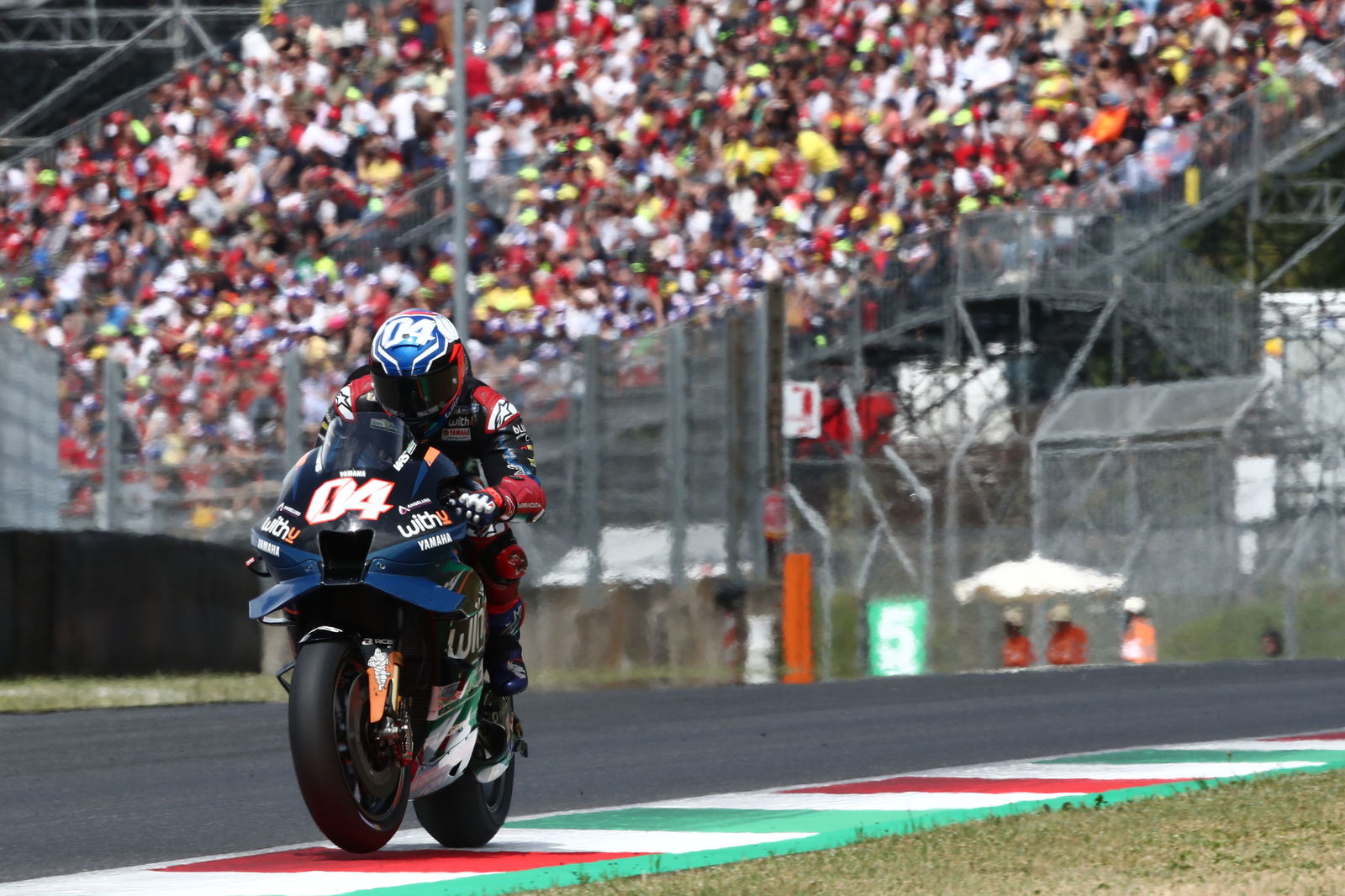
It feels strange to not put Aleix Espargaro and/or Aprilia as the third and final ‘winner’ of Mugello 2022, but the reality for them now is that third place is the expectation.
A bigger winner of the weekend in Italy was the RNF team with whom Aprilia will be partnering in 2023. Razlan Razali’s effort has suffered ever since it lost Fabio Quartararo, and Franco Morbidelli suffered his knee injury in Le Mans 2021. Andrea Dovizioso cannot ride the Yamaha in the correct way, and Darryn Binder - as well as he rode to 16th ( ahead of both Morbidelli and Dovizioso) on Sunday - is not ready for MotoGP yet.
But, the biggest problem for RNF is their manufacturer. Yamaha cares little about its satellite teams. Even when Johann Zarco was at his Tech 3 peak in 2017, he and Tech 3 were unable to convince Yamaha to give him a full factory bike and full factory backing for 2018. Only Quartararo in 2020 was able to get full factory support from Yamaha in the same way that, for example, Jorge Martin gets it right now from Ducati. Even then, Yamaha signed Quartararo for 2021 before the 2020 season had even started, so it was in their interests to give him everything they could.
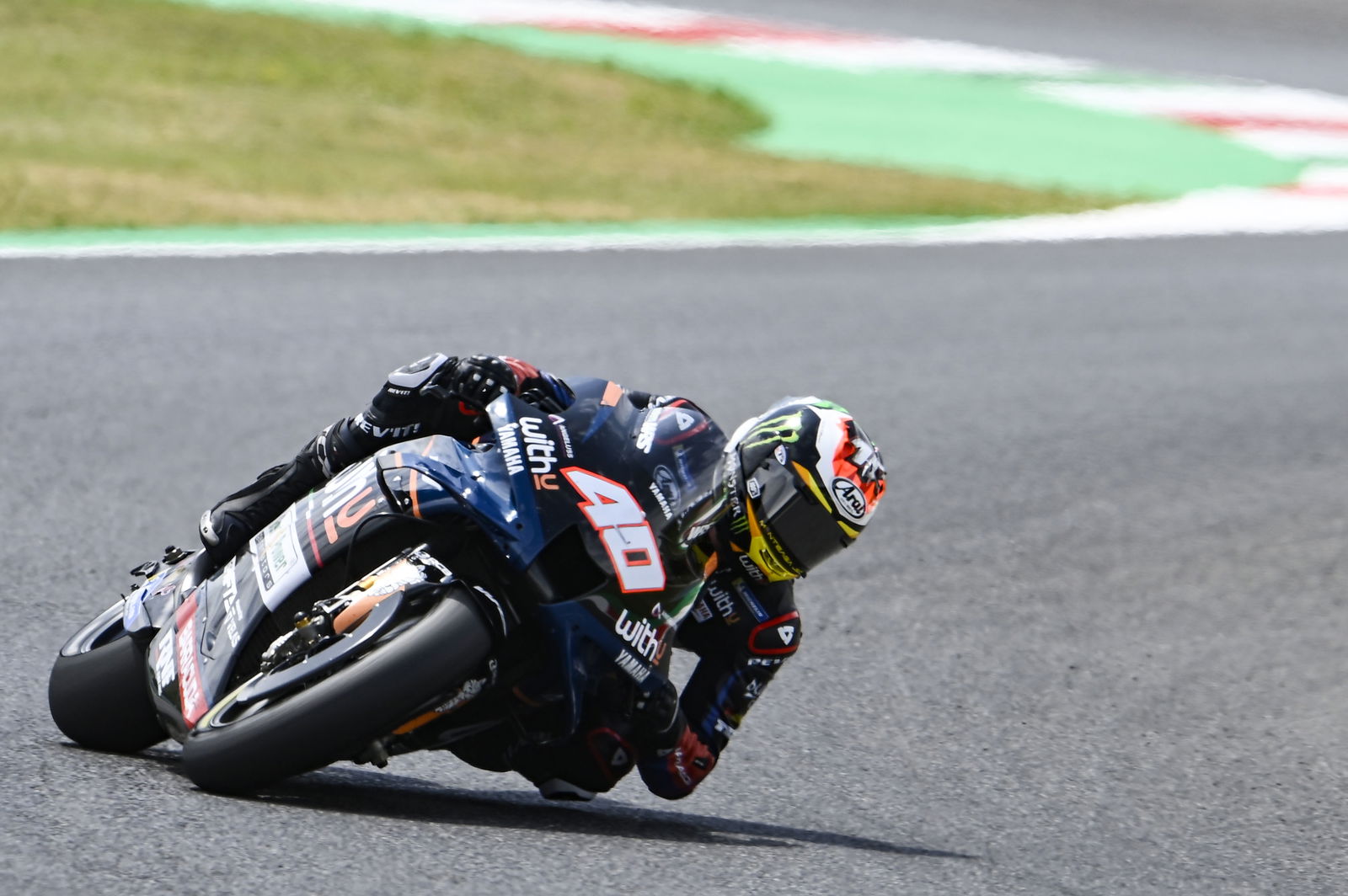
Now, Yamaha’s lack of support for its satellite team - in an age where satellite MotoGP teams are essentially extra spaces for factory bikes - has cost its satellite bikes all together. RNF will move to Aprilia for 2023, with a long term commitment and the opportunity to become the kind of junior team that was always Razali’s goal, and a role which he played so successfully in 2020 that it was his team that fielded Yamaha’s title challengers.
Not only that, but the Aprilia is arguably a legitimately better bike than the Yamaha now, and with the right riders (let’s not forget that both factory Suzuki riders are still without rides for 2023, and with limited options) Razali’s team could be back fighting for podiums and wins next season.
Loser - HRC
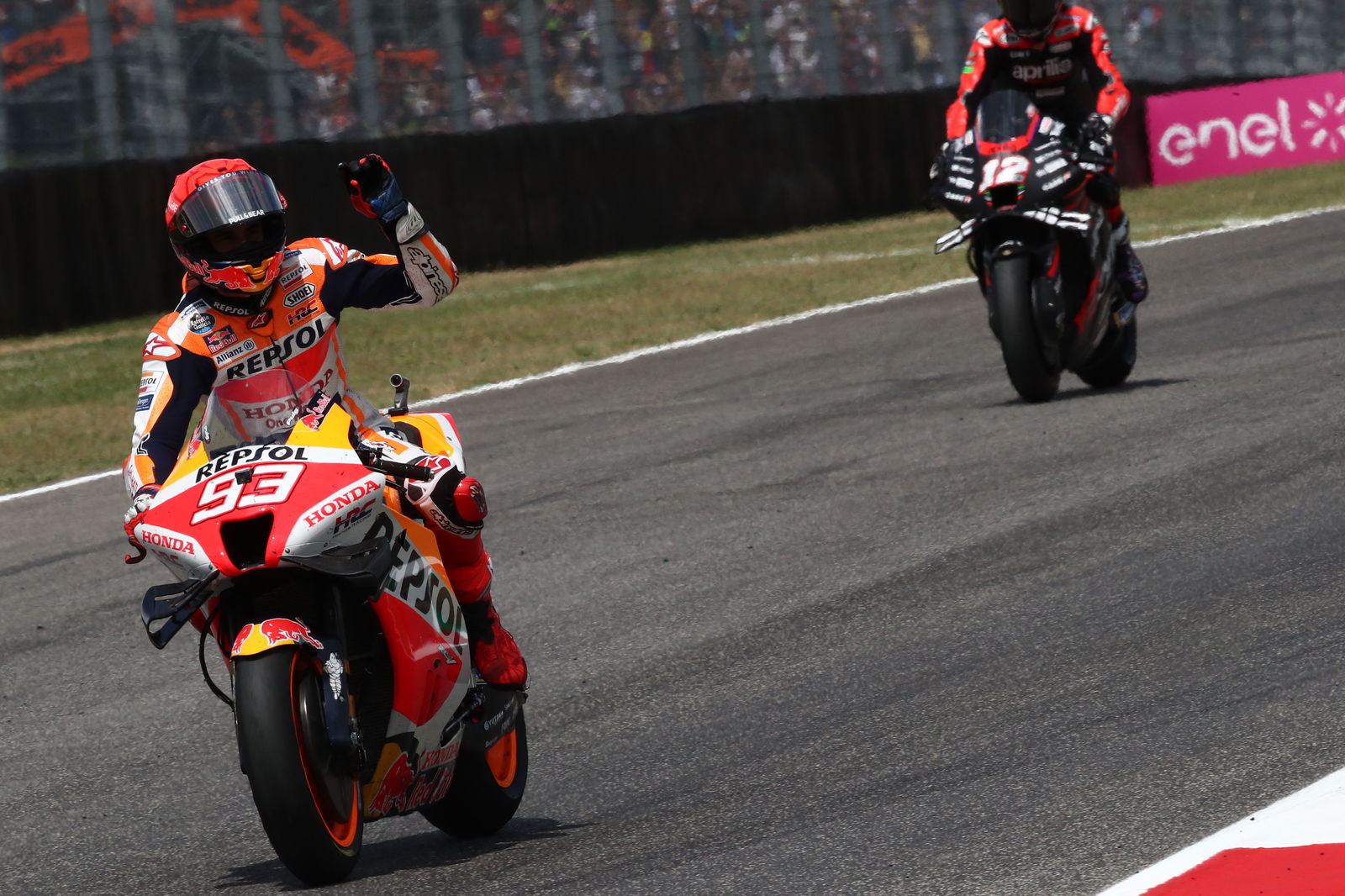
Wins and podiums is also what Marc Marquez will be hoping to fight for in 2023, and he will most likely not be doing that for the rest of 2022.
That is why HRC is a loser. In the long-term, they are not, because (hopefully) Marquez will come back and be capable of finishing in the top three and fighting for wins and championships. However - to return to the present - the best Honda on Sunday was Takaaki Nakagami in eighth, almost 11 seconds off the win. The Japanese had topped FP1 by 0.4 seconds, but the heat plays havoc with Honda’s new RC213V, and in the afternoons the pace went away. For Pol Espargaro, the race ended in the gravel trap, and Alex Marquez raced anonymously to 14th, ahead of a helpless Jack Miller, unable to overtake.
Stefan Bradl will come in to replace Marc Marquez until the end of the season, and 2022 now begins to look quite similar to 2020 for HRC. Perhaps Takeo Yokoyama will find himself in Nakagami’s garage more often, even. Every race Honda has won since 2019 has been won by Marc Marquez, and it now seems like a realistic forecast that they will not win this year.
Loser - Suzuki
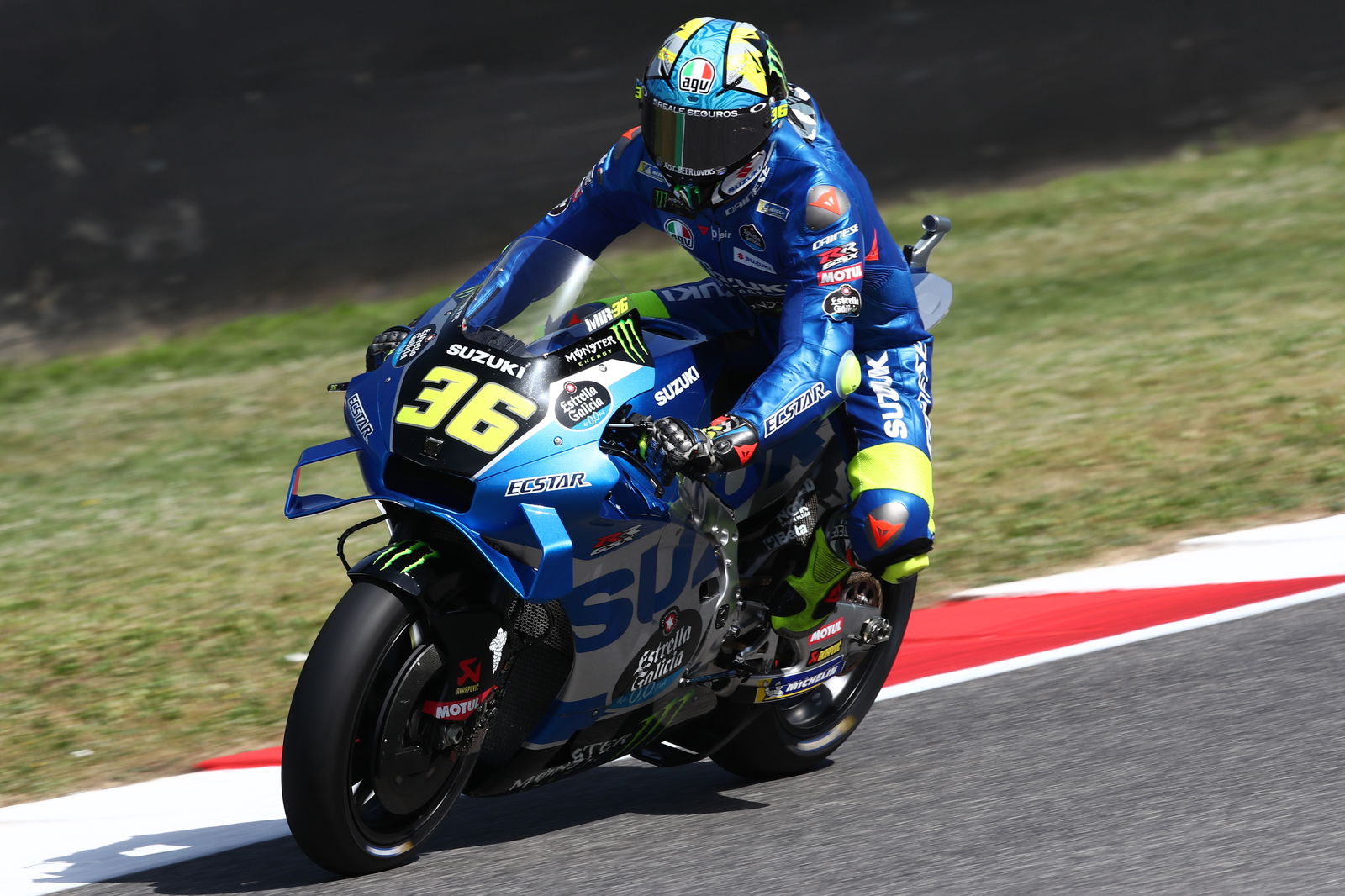
A similar argument could be made for Suzuki, who had another DNF on Sunday. Before Jerez, Alex Rins looked like he might have been the title favourite, having finished consistently in the top seven all season, and Joan Mir had not finished outside of the top six before he was taken out by Jack Miller in Portimao.
But, since Portimao, Alex Rins has not scored a point, and neither Rins nor Mir has even finished a race since Suzuki announced its withdrawal from MotoGP at the end of the year. There are no upgrades coming to the GSX-RR - they have what they have, and right now it does not seem like it is enough. Quartararo is improved compared to the start of the season, the GP22 Ducatis continue to be more refined, and Aprilia and Espargaro only grow in confidence as their podiums become more and more ordinary.
Another double-DNF in Italy leaves 2020 champion Mir 10th in the championship, 66 points behind Quartararo; and Rins is sixth in the points, 53 behind the championship leader. In the manufacturer standings, Suzuki are 101 points behind the leaders, Ducati (who, in fairness to them, have won five of eight races in 2022), and in the Teams’ standings, Suzuki miss 26 points to the leaders, Aprilia.
Loser - MotoGP
The final ‘loser’ comprises two entities, really. Both MotoGP and the Autodromo Internazionale del Mugello suffered at the weekend. In 2016, 100,000 people turned up on Sunday alone, but last weekend only 75,000 arrived over all three days.
Mugello 2022:
Friday: 10.815
Saturday: 19.602
Sunday: 43.661
Total Weekend: 74.078 pic.twitter.com/3GbmKuqGz5— David Emmett (@motomatters) May 29, 2022
Part of this is down to the loss of Valentino Rossi, part of it is down to incredibly high ticket prices (€169 for two days), and part of it is down to the global cost of living crisis. None of those things are especially great to think about, because it is difficult to understand how to solve them. Certainly, there is very little MotoGP can do about global inflation and the cost of living crisis, and presumably Mugello priced tickets at the rate that they felt they would need to in order to make the event profitable from their end. ‘Profit’ is a bit of a dirty word in 2022, but the reality is if Mugello is to stay on the calendar, it needs to be financially sustainable.
But, the loss of Valentino Rossi is almost entirely impossible to make up for. Rossi was not just the face of the sport for 20 years, but he almost was the sport for many people during that time. When Rossi announced his retirement, there was hope that the improvements Dorna had been able to make to the racing since 2016 would help retain fans after Rossi’s retirement. No doubt, more would have gone away from MotoGP if the racing was worse, but the reality is that when a sport is revolving around one individual for two decades the loss of that individual from that sport is going to be more detrimental for the sport than for the individual, especially when said individual outlasts almost all of his major rivals.
In 2006, when Rossi was already considered to be ageing, it would have been inconceivable that top level rookies and 250 riders like Jorge Lorenzo, Casey Stoner and Dani Pedrosa would all be retired before he was, and that his own retirement would not come for another 15 years, but what that reality created was a void, especially with the inconsistency and ill-health of Marc Marquez.
Marquez is the only rider who could have filled the shoes of Rossi, but even in full health he might have struggled to meet the off-track standard that Rossi set.
There was a lot of personality in Rossi, that is undeniable. That is why he was loved, but also why he was hated. It is not difficult to understand that love and hate are the most important emotions when marketing something, because also the people who love will be driven to anger by the people who hate the thing or person they love. But, the important thing about Rossi was that there was always someone who the people who hated him could love: again, Biaggi, Gibernau, Barros, Stoner, Pedrosa, Lorenzo, Capirossi, Marquez. But, in modern MotoGP, there is less of that. None of the riders really have rivalries. Sure, Miller and Mir don’t seem to get on, but Mir does not have the kind of abrasive personality of someone like Lorenzo or Biaggi to really get that emotional about him.
Then you look at the VR46 Academy riders: Franco Morbidelli, Francesco Bagnaia, Luca Marini, Marco Bezzecchi. The most fiery is Bezzecchi, no doubt. There is potential there to forge something between himself and Jorge Martin, but neither are fighting for wins at the moment - although they absolutely could be in the future - and there does not seem to be as much momentum behind Bezzecchi as Martin. As for the other three VR46 riders, they are all studious, and interesting, but there excitement comes exclusively while they are on the bike. They seem nice, but nice is not exciting.
In WorldSBK, they have a great thing with Toprak Razgatlioglu and Jonathan Rea. Their rivalry looks like it will continue to blossom over the next years, and while there is respect between them, there is also a fierce desire to beat each other. MotoGP needs their own Rea-Razgatlioglu rivalry. Maybe it will be Bagnaia and Quartararo, but there needs to be a flashpoint. It is difficult to have that in races where it is difficult to overtake, and also in a championship where everyone seems afraid to actually express themselves.
And that is the other piece. Expression. It does not happen in MotoGP at the moment, because, apart from Aspar, no one apparently wants to. In Formula One, the teams film their own race diaries or vlogs or whatever, and post them on YouTube and across social media, and fans love them because they offer insight into the races that you don’t see. They show emotion, and that is currently what is missing from MotoGP. There is no emotion, no feeling. Sure, when the bikes are on the track, the emotion is fantastic, it is genuinely exciting - even when it is hard to pass. But, once the race ends, the weekend is essentially over. In Formula One, there is still anticipation with teams releasing their own videos through the next week.
There is the same thing in motocross. From Team Fried to Troll Train, BamTV to Adam Uncut, there are a bunch of rider vlogs from US motocross that are all either insightful or just genuinely fun. Also outside the riders, Fox Racing make great gear- they also make great videos, and their Unplugged series is one that offers great enjoyment for motocross and moutain bike fans. Even in Europe, Mattia Guadagnini puts out great content on his YouTube channel, which is also enjoyable for non-Italian speakers, and in the UK there is Tommy Searle. What these videos do is allow fans to experience and connect with riders in a more direct way than in a press conference or an interview with a TV channel, and more importantly, in a less serious, more fun, way.
In MotoGP, there is Aspar. They are the only team with a regular, prominent vlog, and their Moto3 rider, Sergio Garcia, gives video updates on his social media after every GP. The Aspar team should be the example for the rest to follow.
It might not be the only way to do it, but encouraging riders and teams, and allowing non-riders and teams, to create their own video content at the races is, in the opinion of the author of this article who watches the races in his bedroom, an almost guaranteed way to regenerate some emotion in MotoGP.
